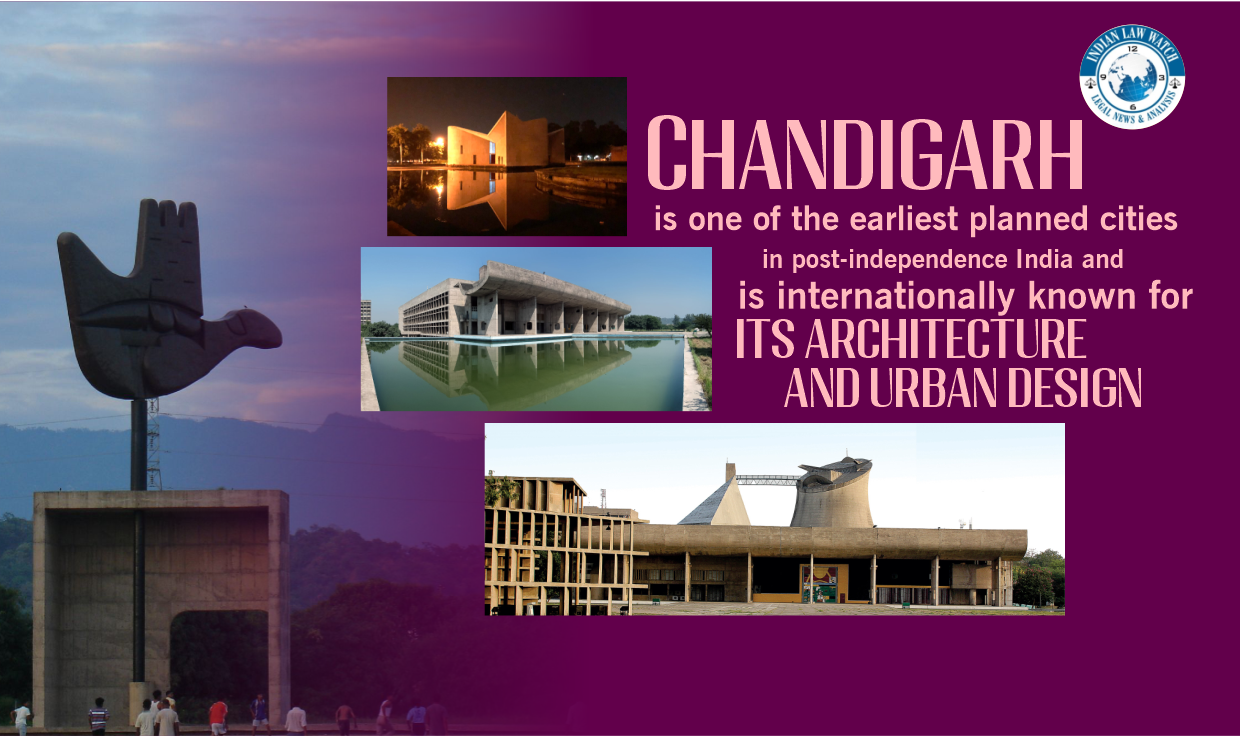

Top court bench slams UT administration for ‘blindly sanctioning’ building plans, says it is apparent from them that they are in effect converting one dwelling unit into three apartments
The Supreme Court on Tuesday prohibited “fragmentation or apartmentalisation” of residential units in phase-I of Chandigarh, saying it will injure the “lungs” of the city as conceptualised by French architect Le Corbusier who had designed it.
While appealing to the legislature, the executive and policy makers at the Centre and states to make necessary provision for carrying out environmental impact assessment studies before permitting urban development, the apex court said it is necessary that a proper balance is struck between sustainable development and environmental protection.
The top court noted that Chandigarh was made a Union Territory (UT) and became the capital for the states of Punjab and Haryana. The city, it said, was developed in two phases—phase-I having sectors 1 to 30 and phase-II having sectors 31 to 47.

A bench of Justices B R Gavai and B V Nagarathna slammed the Chandigarh administration for “blindly sanctioning” building plans and said it is apparent from them that they are in effect converting one dwelling unit into three apartments.
“Such a haphazard growth may adversely affect the heritage status of phase-I of Chandigarh which is sought to be inscribed as a UNESCO’s heritage city,” the bench said in its 131-page verdict.


-
The top court delivered its judgement on the appeals challenging the November 2021 verdict of the Punjab and Haryana High Court which had held that there was no provision under the Capital of Punjab (Development and Regulations) Act, 1952, or the Rules framed thereunder governing transfer of shares in relation to a site or building whether owned singly or under joint ownership.
-
The high court had also held that sale of shares out of a building or site by the allottee or transferee was not barred and was permissible under the general civil law.
-
In its verdict, the apex court said permitting redensification in phase-I, which has heritage value on account of being “Corbusian Chandigarh”, without the same being approved by the Chandigarh Heritage Conservation Committee, is contrary to the Chandigarh Master Plan (CMP) 2031.
-
The bench noted the high court said “apartmentalisation” is not permissible and goes on to hold that though developers or builders are in effect indulging in construction of three apartments in a building the same does not amount to apartmentalisation.
-
“In our view, this would amount to permitting something indirectly which is not permitted directly,” it said.
-
The bench further noted that though the Chandigarh administration is permitting one dwelling unit to be converted into three apartments, its adverse effect on traffic has not been addressed.
-
“With the increase in number of dwelling units, a corresponding increase in the vehicles is bound to be there. However, without considering the said aspect, one dwelling unit is permitted to be converted into three apartments,” it said.
-
“Having noted the stand of the Chandigarh Administration that the construction and floorwise sale of residential building was not permissible in view of Rule 16 of the 2007 Rules (Chandigarh Estate Rules 2007), the high court ought to have held that the statutory rules framed under 1952 Act expressly prohibits fragmentation/ division/bifurcation/apartmentalisation of a residential unit in phase-I of Chandigarh,” it said.
-
The bench said it must be noted that the CMP-2031 itself, at more than one place, states that Chandigarh has been planned as a green city with abundance of open space and to ensure that every dwelling has its adequate share of the three elements of sun, space and verdure.
-
“The fragmentation/apartmentalisation of single dwelling units in phaseI of Chandigarh, in our view, will injure the ‘Lungs’ of the city as conceptualised by Le Corbusier,” it said.
-
Referring to Rule 16 of the 2007 Rules, the bench said there is a specific bar on fragmentation of sites or buildings and it is the specific stand of the Chandigarh administration that construction of apartments is not permissible.
-
“On the other hand, the 2017 Rules (Chandigarh Building Rules (Urban), 2017) are enacted in such a way that there is scope for the construction of apartments. Not only that, but the Chandigarh administration is sanctioning plans which, in effect, permit apartmentalization,” it said.
-
“We therefore find it necessary to direct that after the Chandigarh administration takes decision to amend the provisions, the same shall be placed before the Central Government for its consideration and final decision,” it said.
-
The bench said for protecting the heritage status of Corbusian Chandigarh, it is necessary that it should exercise its powers under Article 142 of the Constitution and issue certain directions.
-
“In that view of the matter, we hold that in view of Rule 14 of the 1960 Rules (Chandigarh (Sale of Sites and Building) Rules 1960), Rule 16 of the 2007 Rules and the repeal of the 2001 Rules (Chandigarh Apartment Rules, 2001), fragmentation/division/ bifurcation/apartmentalisation of a residential unit in phase-I of Chandigarh is prohibited,” it said.
-
Directing the Heritage Conservation Committee to consider the issue of redensification in phase-I of the city, the bench said the committee would take into consideration its own recommendations that the northern sectors of Chandigarh (Corbusian Chandigarh) should be preserved in their present form.
-
It said the committee shall also take into consideration the impact of such redensification on the parking/traffic issues and after this, the Chandigarh administration would consider amending the CMP-2031 and the 2017 Rules insofar as they are applicable to phase-I in accordance with the recommendations of the panel.
-
“Such amendments shall be placed before the Central Government, which shall take a decision with regard to approval of such amendments keeping in view the requirement of maintaining the heritage status of Le Corbusier zone,” it said.
-
The bench said till a final decision is taken by the Centre, the Chandigarh administration shall not sanction any plan of a building which ex-facie appears to be a modus operandi to convert a single dwelling unit into three different apartments occupied by three strangers.
-
It said till Centre takes a final decision, no Memorandum of Understanding (MoU) or agreement or settlement amongst co-owners of a residential unit shall be registered nor shall it be enforceable in law for the purpose of bifurcation or division of a single residential unit into floorwise apartments.
-
“We further direct that hereinafter, the Central Government and Chandigarh Administration will freeze FAR (floor area ratio) and shall not increase it any further,” the apex court said.
-
It said the number of floors in phase-I shall be restricted to three with a uniform maximum height as deemed appropriate by the Heritage Conservation Committee keeping in view the requirement to maintain its heritage status.
-
The bench said the Chandigarh administration shall not formulate rules or bylaws without prior consultation of the committee and prior approval of the Centre.
Source: The Tribune





